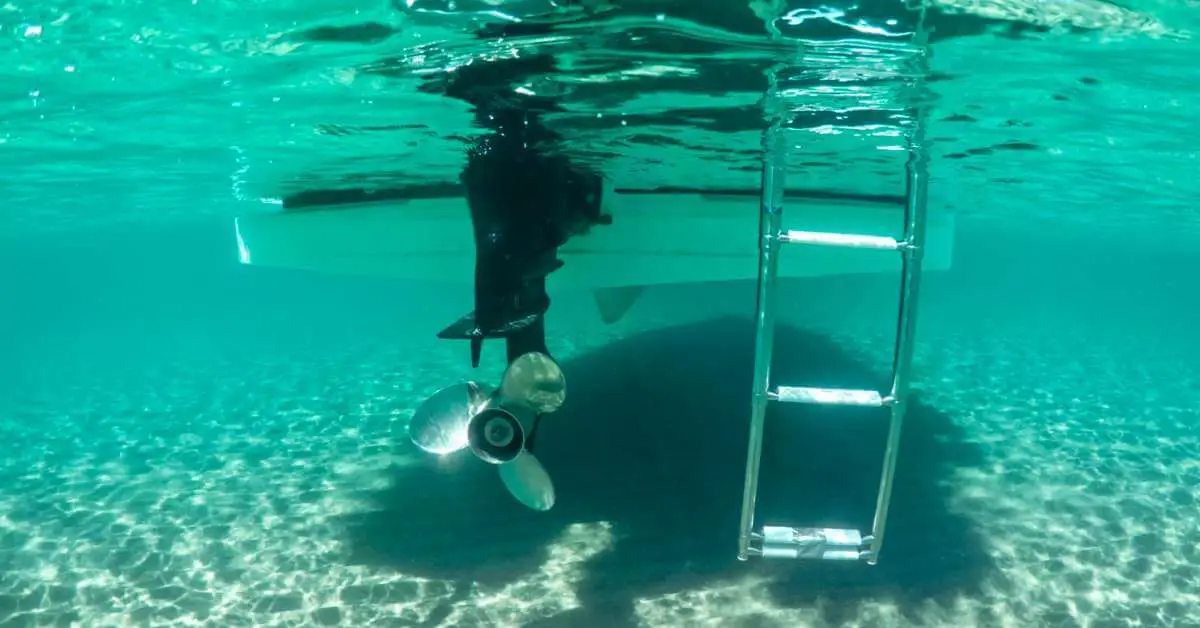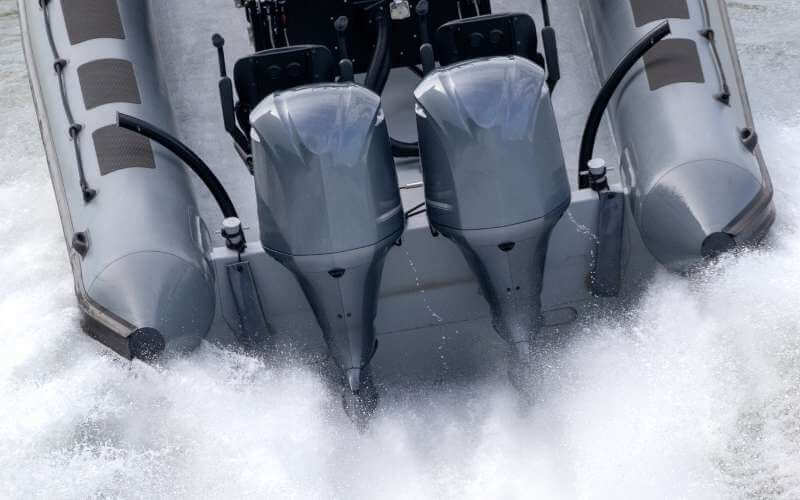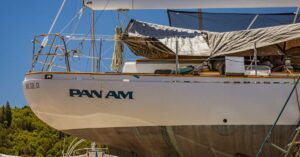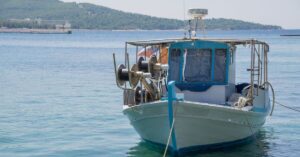Boat propeller strikes are a potential source of significant injuries or even fatalities that concerns every boater. However, they can be prevented by incorporating certain measures.
Safety essentials such as an engine cut-off switch lanyard and life jackets significantly enhance safety on the water. These measures prevent the boat from running unattended and ensure anyone who falls overboard stays afloat, reducing the chances of propeller-related incidents.
Additionally, appointing a designated spotter and using specialized propeller safety devices provide an extra layer of protection. By prioritizing these safety measures, boaters can reduce the risk associated with propeller strikes, ensuring a safer experience for everyone onboard.
Understanding Boat Propeller Strikes
A boat propeller strike accident is when a person or object is hit by the spinning blades of a boat’s propeller. These accidents can have serious consequences, leading to severe injuries or even fatalities.
They often occur when individuals are in or close to the water near a boat whose engine is running. They can also result from improper entering or exiting of the boat or due to reckless boat operation.
Spinning propeller blades carry significant risks due to their high speed and sharp edges. Hence, it’s vital to adhere to safety measures and exercise caution to prevent these accidents and protect people in and around the water.
Why Propeller Strikes Injuries Happen and Their Consequences
Propeller strikes often result from boat operator negligence through reckless steering, sudden turns, or abrupt speed changes. Operating at high speeds in crowded areas heightens the risk of such accidents.
Lack of experience and disregard for boating safety norms also contribute to propeller accidents. Inexperienced operators may navigate dangerous areas with swimmers, divers, or other water-based activities without caution, disregarding safety rules for swimming platforms or ignoring dive flags.
To prevent these accidents, boat operators should operate the boat with due care and vigilance and adhere to safety and alcohol consumption regulations, especially in watersports zones.
Propeller strikes result in severe injuries from deep lacerations to amputations and may even be fatal. The force and impact of a propeller strike can cause significant physical and psychological damage, including internal injuries and liminal trauma.
How to Avoid Boat Propeller Accidents
Preventing boat propeller strikes involves implementing several safety practices. The first and most important step is to use an engine cut-off switch lanyard. This device, attached to the boat operator, automatically turns off the engine if the operator is thrown from the helm. Coupling this with consistent life jacket wearing provides added protection against incidents.
Another method is the assignment of a dedicated observer whose task is to monitor those in the water, ensuring their safety and maintaining open communication with the operator. This person should be able to identify potential hazards quickly.
Investing in propeller safety devices like guards or covers is highly recommended. These protective barriers shield around the spinning propeller blades, reducing instances of contact with people in the water.
Additional precautions include regular engine maintenance to avoid malfunctions or sudden speed accelerations, adhering to speed limits and laws, using visible dive flags and signal devices when swimmers or divers are present, and avoiding operating a boat while under the influence of alcohol or drugs.
Implementing these safety measures reduces propeller accident risks and ensures everyone’s well-being in and around the water.
Safety Equipment to Prevent Propeller Strikes Injuries
Boat propeller strikes can cause severe injuries and even death, so it’s crucial to prioritize safety measures. Necessary gear such as a propeller guard, an ignition safety switch lanyard, or a wireless engine cut-off switch might be utilized to avert these potential risks.
By investing in these devices, boat owners can significantly reduce the risk of propeller strike accidents and help ensure the safety of everyone on the water. Let’s list some of these safety devices:
Ringed Propellers
Ringed propellers are uniquely designed safety devices that significantly decrease the risk of propeller strikes. The design features a ring surrounding the propeller blades, creating a physical barrier that prevents slashing and cutting injuries.
The primary function of ringed propellers is to lower the possibility of severe injuries resulting from propeller strikes. Standard propellers pose a potential threat due to their spinning blades. This risk is minimized with ringed propellers, where the ring serves as a buffer, averting direct blade contact and, subsequently, reducing injury.
Propeller Guards
Propeller guards, also called prop guards, are safety devices designed as steel cages that wrap around boat propellers. They offer an extra layer of safety, beneficial for boats powered by large engines and high-speed propellers, as they mitigate the risk of propeller strikes.
Critical features of propeller guards include their durability, ease of installation, and compatibility with a wide range of boat propellers. They are designed to withstand boating activities, ensuring long-lasting and reliable performance.
Propulsion Alternatives
When it comes to propulsion alternatives for boats, one popular option is the use of jet drives. Instead of traditional propeller blades, inboard or outboard jet drives work by directing jet streams of water using an impeller.
One key advantage of jet drives is their significantly lower risk of propeller strikes and injuries due to the absence of exposed blades. This feature is beneficial in shallow waters or areas with marine life where potential damage or harm is amplified.
By using jet drives as a propulsion alternative, boaters can enjoy the benefits of efficient and safe propulsion while minimizing the risk of propeller strike accidents.
Swim Platforms Ladder Interlock
The swim platforms ladder interlock is a vital safety device for boats, designed to prevent accidents involving propeller strikes when passengers use the ladder attached to the swim platform.
This interlock ensures the propeller remains inactive as passengers enter or exit the water by sounding an alarm and automatically turning off the boat’s engine when the ladder is in use. By switching off the engine immediately, it mitigates potential hazards caused by spinning propeller blades.
Anti-Feedback Steering System
An anti-feedback steering system is crucial equipment on a boat for preventing propeller strikes. It works by counteracting prop torque, preventing the boat from veering off, which could potentially cause accidents.
This steering system locks onto the course set by the boat operator. This technology prevents the distressing “Circle of death” scenario, a situation where the boat continuously spins in a circular motion due to the torque from the propeller.
The anti-feedback steering system offers several benefits, including improved control and boat maneuverability for safe navigation, especially in busy or congested waters.
Electronic Cut-Off Switch on the Engine Control Panel
The electronic cut-off switch is a critical safety feature on a boat’s engine control panel, designed to help prevent propeller strike accidents by shutting off the engine and propeller if the operator falls overboard.
Installing an electronic cut-off switch involves a few straightforward steps, beginning with connecting it to the engine control panel as per the manufacturer’s instructions. Attention should be given to secure and well-insulated connections.
Once connected, the switch can be attached to the operator, typically using a lanyard, worn around the wrist or affixed to a life jacket, and linked to the switch.
In the event that the boat operator falls into the water, the electronic cut-off switch, detecting the disconnection from the lanyard, promptly shuts off the engine and propeller, preventing the boat from posing additional risk.
Conclusion
Ensuring boat safety and preventing propeller strikes is a multi-faceted process, requiring careful selection and installation of appropriate equipment combined with vigilant operation.
Each tool plays its part, from alternative propulsion systems like jet drives that reduce risk to the diligent use of swim platforms ladder interlock devices for safeguarding passengers entering or exiting the water.
It’s clear that a combination of mechanical aids and mindful behavior significantly reduces the risks involved in boating, ensuring a safer and more enjoyable experience on the water for everyone.







